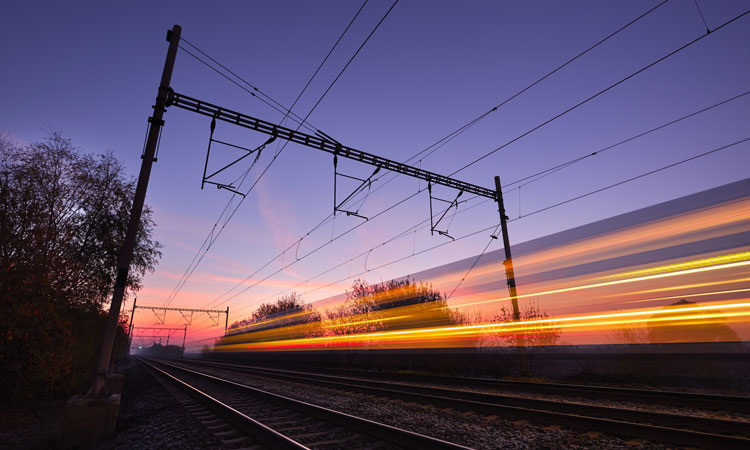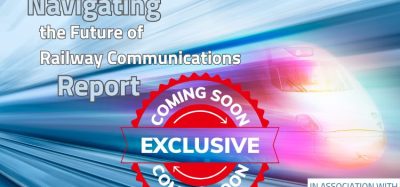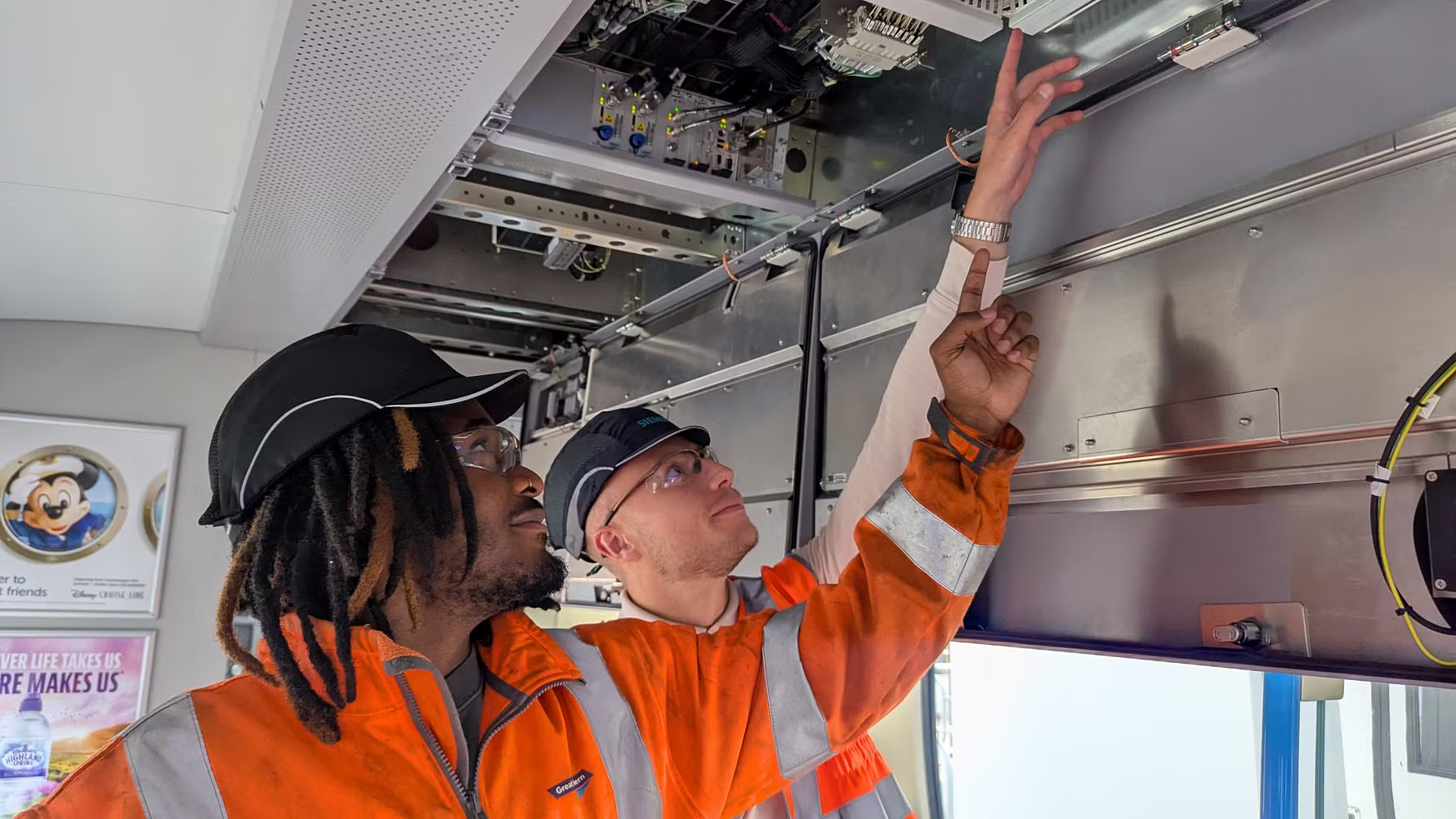Supporting development with an integrated approach
Posted: 15 March 2023 | Carlo Borghini | No comments yet
Carlo Borghini, Executive Director of Europe’s Rail Joint Undertaking (EU-Rail), considers the next generation of telecommunication needs for rail to help enhance the performance and cost-efficiency of operations, while ensuring safety and security.


The set up and launch of the Europe’s Rail Joint Undertaking (EU-Rail) on 30 November 2021 not only resulted in ensuring the creation of the legal and universal successor of the Shift2Rail Joint Undertaking (S2R JU) and its Programme, but also introduced a new approach to the evolution of the rail system during the next decade. The main objective is to achieve via a system of systems approach a cost effective, high-capacity integrated European railway network by eliminating barriers to interoperability and providing solutions for full integration, covering traffic management, vehicles, infrastructure, and services, aiming to achieve faster uptake and deployment of projects and innovations. This approach exploits the huge potential for digitalisation and automation to reduce rail’s costs, increase its capacity and enhance flexibility and reliability, which should be based upon a solid reference system architecture shared by the sector, in coordination with the European Union Agency for Railways (ERA).
Railways are a complex system of systems and oversimplifying merely translates in not reflecting the reality of rail or perpetrating underperforming operations. This major transformation of the rail system, driven by automation and digitalisation, relies, inter alia, on the set up of the next generation of telecommunications, neutral to the specific communication technology, from LTE and 5G to the European Union Governmental Satellite Communications (GovSatCom), as well as any other available or upcoming solutions that will help enhance the performance and cost-efficiency of the rail system operations, while ensuring safety and security.
Enabling the next level of railway digitalisation
Within the S2R JU, research and innovation activities were performed towards the introduction of Adaptable Communication Systems (ACS). The concept is to provide the communication backbone particularly focusing on train-to-ground communication for enabling the next level of digitalisation of railways. The approach foresees the separation and decoupling of railway applications from the underlying radio systems and supporting generic communication services, in order to ensure developments in radio technology can be incorporated more readily into CCS and overall rail systems, as well as enabling new operating models that reduce capital investments and operational costs. Covering all market segments, using packet switching/IP technologies (GPRS, EDGE, LTE and its evolution, Satellite, Wi-Fi among others), ACS will enable easy migration from existing systems (such as GSM-R) and provide enhanced throughput, safety, and security functionalities to support the current and future needs of signalling systems. It will also ensure resilience to interference and openness to developments in radio technology. Backwards compatibility with ERTMS has been ensured.
The results reached within ACS were demonstrated at InnoTrans 2022; EU-Rail carried out a demonstration where a GoA4 prototype equipped train was supervised from a control centre in Germany, launched from the InnoTrans premises in Berlin and run on a private network in the Czech Republic, all via a LTE telecommunication standard.
The need for more throughput, higher capacity, and flexibility, combined with the obsolescence reached by GSM-R, resulted in the launch of working groups to establish specifications and standards for the next generation of rail communications, the Future Railway Mobile Communication System (FRMCS). It is expected to replace GSM-R as the communications system for rail and, , at this stage, it is still replicating it conceptually, carrying consequently associated risks and issues.
5G specification validation
In order to validate the progress achieved within the different FRMCS working groups, the 5GRAIL project was funded under the Horizon 2020 Programme. In the context of such a project, the validation of the latest 5G specifications for railways is expected to be performed, including in cross-border environments covering the most advanced technological innovations expected from 5G releases, up to 17. The project is also expected to test prototypes, both in labs and in operational environment to accelerate the market uptake expected as from 2025.
The proposal for the TSI 2022 did not receive the necessary input to include a full description of FRMCS with respect to interoperability functions. A subsequent dimensioning of the input to high-level specifications, further reduced the scope and coverage of the TSI proposal. This appears to be related also to external delays, 3GPP and ETSI, negatively affecting the capacity to deliver the full set of specifications.
It also appears that the current FRMCS focus is on specific ‘R’ functions of the new 5G backbone, particularly in relation to the domain of voice communication, such as emergency radio, delaying the definition of specifications in relation to the use of commercial networks that, on the contrary, have been tested successfully in the context of the DIGIRAIL project in Finland.
At this stage, the EU-Rail Programme includes some activities touching upon the European next generation of telecommunications, largely relying on the input and works performed in ACS and FRMCS and the establishment of the necessary TSI inputs.
Ongoing tests and validations for development
However, it has become clear, unfortunately too late for the first round of EU-Rail Calls, that in addition to the already funded testing, a further round of testing and validation, product development, and national deployment considerations is potentially required to support the ongoing development of the future radio specifications.
Considering the above, it appears clear that the evolution of the railway system requires the integration of the next generation of the telecommunications – ‘R’ specific, commercial, GovSatCom, and so on – within the overall concept of operations and system architecture developed within the EU-Rail Programme under the System Pillar1, in line with the concepts of modularity, unlocked technological solutions, open access, and more. This will allow the production of the final specifications, the proposals for standards and the necessary input to the TSIs in view of future deployment, on a revised timetable to cope with the obsolescence of the GSM-R. These works can only succeed with the adequate involvement of ERA as ERTMS authority for safety and interoperability and the oversight of the European Commission (EC), which will have to adopt the TSIs, under comitology, i.e., after having consulted the Member States. Finally, these specifications will be necessary for the development of actual products and are a precondition for launching any future tenders.
An integrated approach
Nevertheless, this may be insufficient if not supported by an integrated approach from R&I to standards and deployment, with a possible project within the EU-Rail Programme, integrating the aforementioned results, testing, demonstrating, and validating them at different levels until reaching preparedness for industrialisation. Additionally, synergies with the other Joint Undertakings will allow covering the specific telecommunication areas, including microchips, networks, among others, which are currently not covered by the EU-Rail Programme.
Such a system integrated approach will require all actors involved in the next generation of telecommunications, contributing to the overall objectives defined above, with a revised industrial roadmap endorsed by the sector against clear commitments.
Reference:
1. The System Pilar activities will be published in the EU-Rail website as from early December 2022.


OUT NOW: The Definitive Guide to Rail’s Digital Future
The rail industry is undergoing a digital revolution, and you need to be ready. We have released our latest market report, “Track Insight: Digitalisation.”
This is not just another report; it’s your comprehensive guide to understanding and leveraging the profound technological shifts reshaping our industry. We move beyond the buzzwords to show you the tangible realities of AI, IoT, and advanced data analytics in rail.
Discover how to:
- Optimise operations and maintenance with real-time insights.
- Enhance passenger services through seamless, high-speed connectivity.
- Leverage technologies like LEO satellites to improve safety and efficiency.
Featuring expert analysis from leaders at Nomad Digital, Lucchini RS, Bentley Systems and more, this is a must-read for any rail professional.
Issue
Related topics
European Rail Traffic Management System (ERTMS), European Train Control System (ETCS), Future Railway Mobile Communications System (FRMCS), Global System for Mobile Communications – Railway (GSM-R)
Related organisations
European Commission (EC), European Union Agency for Railways (ERA), Europe’s Rail Joint Undertaking (EU-Rail)







